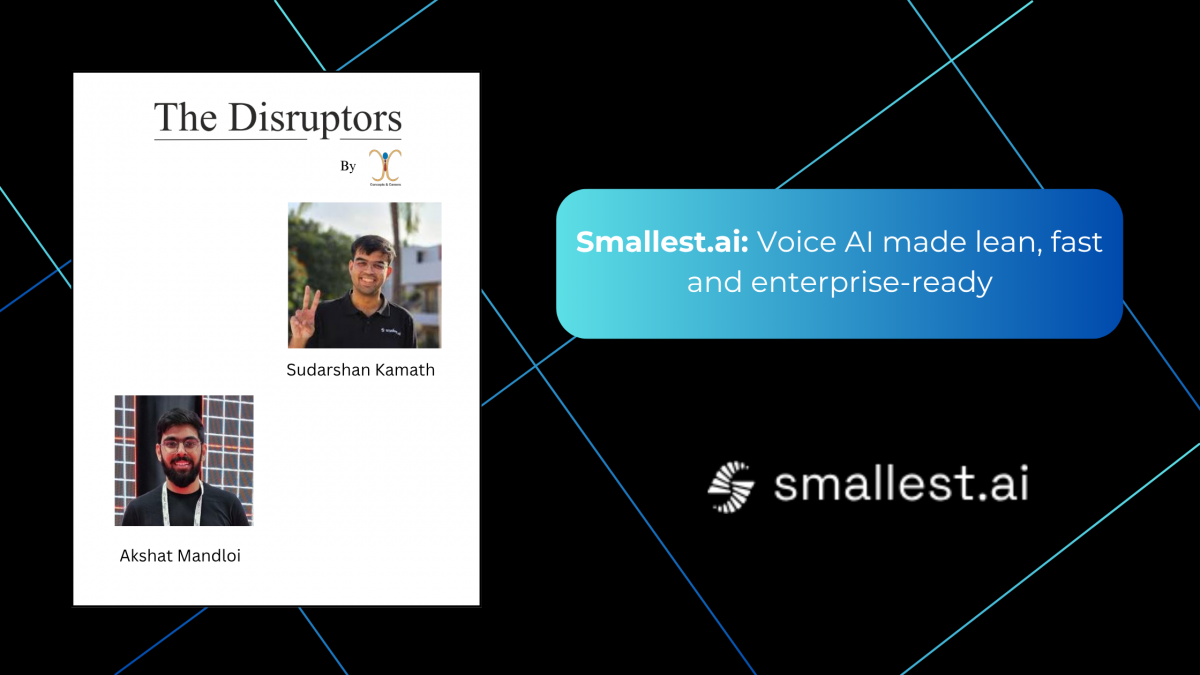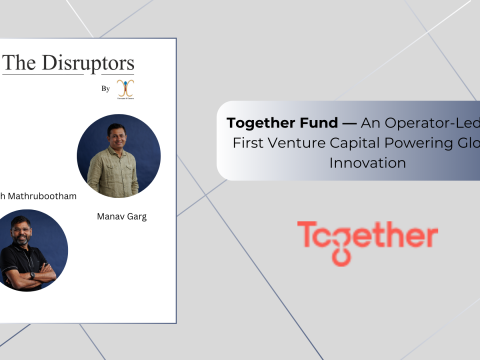- Have any questions?
- [email protected]
Smallest.ai: Voice AI made lean, fast and enterprise-ready

Mastering Leadership: A Deep Dive into “Executive Leadership: A Manual for the Principles of Supervision” by Nathan Axelrod
October 15, 2025
Mastering Habits: A Comprehensive Analysis of “Atomic Habits: An Easy & Proven Way to Build Good Habits & Break Bad Ones” by James Clear
October 22, 2025what Smallest.ai is building and why it matters
Smallest.ai is a startup focused on building efficient, privacy-aware, multilingual voice-AI for enterprises — from contact-centre automation to recruitment and collections. The company’s thesis: deliver expressive, production-quality speech agents that run with far smaller compute footprints and easier integration than many large multimodal stacks, making voice automation practical at scale. Recent reporting shows a seed round that underscores strong investor interest in this category.
Product & technology (product manager / engineer lens)
Smallest.ai’s stack combines several practical layers:
- Low-latency TTS / ASR models: Optimised for quality at reduced compute cost (what they describe as “Lightning” models), enabling many voices and languages without huge GPU infrastructure.
- Voice agent orchestration: Tools for building dialogue flows, integrating with telephony/CRM systems, and routing to human handover when needed. Their site highlights use cases such as recruitment screening, collections and onboarding automation.
- Privacy & enterprise integrations: Focused connectors for telephony, CRM, and secure data handling so customers can deploy agents within regulated workflows.
The product emphasis is pragmatic: deliver reliable transcription, natural-sounding TTS, and tightly integrated workflows rather than chase research benchmarks that don’t map to enterprise requirements.
Founders & team (reporter lens)
Smallest.ai is led by Sudarshan Kamath and Akshat Mandloi, founders with engineering and speech/AI backgrounds. Public profiles and company materials show the founders’ focus on efficient model engineering and productised voice agents built for real operational constraints.
Funding & traction (investor lens)
Smallest.ai recently closed an $8M seed round led by Sierra Ventures, with participation from funds and angels including 3one4 Capital, Better Capital and others — a strong signal that investors see opportunity in voice AI that’s production-ready and cost-efficient. Multiple outlets reported the raise and details about the round.
On traction, company materials and industry coverage position Smallest.ai as serving enterprise use cases (contact centres, recruitment workflows) and advertising support for “100+ voices” and multilingual capabilities — positioning it as a player ready for commercial pilots and scale.
Market fit & opportunity (analyst lens)
Why today? Enterprises are increasing spend on automation, and voice remains one of the last high-value channels that’s still manual and costly. Demand drivers:
- Contact centres seek cost reductions without degrading CX.
- Recruitment and onboarding have repetitive, high-volume voice tasks suited to agents.
- Privacy and on-prem or small-infrastructure deployments are prioritized in regulated industries.
Smallest.ai’s niche — high-quality voice agents that aren’t GPU-hungry — targets organisations that need scale but can’t afford massive model serving costs. If the company can deliver consistent accuracy, natural voice, and simple integrations, it can displace legacy IVR providers and bespoke automation projects.
Go-to-market & business model (operator lens)
Expected GTM levers for Smallest.ai:
- Vertical pilots: recruitment firms, BFSI for collections, health-tech for patient outreach — proof points that convert to long enterprise contracts.
- Usage + subscription pricing: base platform fees plus per-minute or per-session charges for voice generation and transcription.
- Partnerships / channel: telephony providers, contact-centre vendors, and systems integrators to embed agents into existing stacks.
Operational focus should be on reducing time-to-pilot (prebuilt connectors, GDPR/SOC controls) and building vertical templates that show ROI quickly.
Risks & mitigations (risk officer lens)
- Audio quality & edge cases: voice agents must handle accents, noisy lines and ambiguous intents. Mitigation: strong ASR training data and edge-case test suites.
- Regulatory/privacy constraints: enterprises in finance or healthcare demand strict controls — offering on-prem, private-cloud or encrypted streaming options is essential.
- Competition & differentiation: other voice AI startups and big cloud providers compete on model quality and scale. Smallest.ai’s advantage must remain cost/performance and integratability.
Investor POV — why watch Smallest.ai
The seed round led by Sierra Ventures validates a thesis that voice-first automation still has sizeable greenfield opportunity. Investors should track:
- Pilot→enterprise conversion rate and average contract value (ACV).
- Accuracy and naturalness metrics across languages/voices.
- Gross margins per minute/session — the unit economics of serving voice at scale.
- Regulatory/compliance certifications that open enterprise pipelines.
If Smallest.ai converts early pilots into recurring revenue and demonstrates favorable economics vs. legacy IVR and cloud voice costs, it can capture significant share in enterprise voice automation.
Roadmap & what to watch next
- Published case studies showing cost savings and CX uplift in recruitment or collections pilots.
- Expanded telephony integrations and prebuilt flows for common enterprise jobs.
- Model footprint improvements that further reduce serving cost while preserving quality.
- Compliance accreditations (SOC 2, ISO) that unlock large enterprise accounts.
Final take
Smallest.ai is an example of a focused, engineering-first startup that builds for production constraints rather than research benchmarks. The $8M seed round gives it runway to productise vertical workflows, scale integrations and prove the economics of “GPU-light” voice AI in enterprises. If it executes on pilots, shows measurable ROI and keeps costs low, Smallest.ai can be a practical disruptor in the voice automation space.





